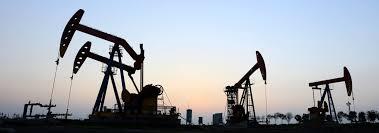Selecting the right oil storage tank is a crucial decision for businesses and individuals in the oil and gas industry. The right tank ensures safe storage, operational efficiency, and regulatory compliance. With a variety of options available, it’s essential to consider several factors before making your choice. This guide outlines the key considerations and helps you find the best fit for your specific requirements.
Understanding Oil Storage Tank Types
Oil storage tanks come in various types, each designed for specific purposes. The main categories include:
1. Above-Ground Storage Tanks (ASTs)
- Applications: Commonly used in industrial, commercial, and residential settings.
- Advantages:
- Easy installation and maintenance.
- Visible for inspections and monitoring.
- Disadvantages:
- Prone to environmental exposure and temperature variations.
2. Underground Storage Tanks (USTs)
- Applications: Ideal for facilities with space constraints.
- Advantages:
- Saves space and minimizes visual impact.
- Offers better temperature stability.
- Disadvantages:
- Higher installation and maintenance costs.
- Requires compliance with strict environmental regulations.
3. Fixed Roof Tanks
- Features: Simple design with a stationary roof.
- Advantages:
- Cost-effective for storing non-volatile liquids.
- Low maintenance.
- Disadvantages:
- Limited vapor control.
4. Floating Roof Tanks
- Features: A roof that floats on the liquid surface, reducing vapor space.
- Advantages:
- Minimizes evaporation losses.
- Reduces fire risk.
- Disadvantages:
- Higher construction costs.
5. Horizontal and Vertical Tanks
- Horizontal Tanks: Ideal for smaller capacities and mobile applications.
- Vertical Tanks: Better suited for large-scale storage with efficient space utilization.
Key Factors to Consider When Choosing an Oil Storage Tank
Selecting the right tank involves evaluating multiple factors to ensure it meets your needs.
1. Storage Capacity Requirements
Determine your storage needs based on:
- Volume of oil to be stored.
- Frequency of replenishment.
- Future growth expectations.
Larger tanks may offer economies of scale, but they require more space and higher upfront investment.
2. Type of Oil or Liquid
The properties of the stored liquid affect tank selection. For instance:
- Crude Oil: Requires robust tanks to handle high viscosity.
- Refined Products: May need temperature control to prevent degradation.
- Chemicals: Demand corrosion-resistant materials.
3. Material of Construction
Common materials include:
- Steel: Durable and versatile, suitable for high-pressure applications.
- Fiberglass: Lightweight, corrosion-resistant, ideal for chemical storage.
- Plastic (Polyethylene): Cost-effective for small-scale storage.
Each material has its pros and cons, so choose based on durability, cost, and compatibility with the stored product.
4. Location and Space Constraints
Consider the available space and environmental factors:
- Above-ground tanks are easier to install but require adequate clearance.
- Underground tanks save space but demand excavation and compliance with strict regulations.
5. Regulatory Compliance
Ensure the tank complies with local and international standards, such as:
- API Standards: For design, construction, and maintenance.
- Environmental Protection Agency (EPA) guidelines: For spill prevention and control.
- Fire Safety Codes: To mitigate risks.
6. Safety Features
Look for tanks equipped with:
- Spill Containment Systems: Secondary containment to prevent leaks.
- Venting Systems: To manage pressure changes.
- Fire Suppression Systems: To reduce fire hazards.
7. Cost Considerations
Evaluate the total cost of ownership, including:
- Initial purchase and installation costs.
- Maintenance and inspection expenses.
- Operational efficiency and lifespan.
While upfront costs are important, long-term savings from durability and efficiency should guide your decision.
Customization Options for Oil Storage Tanks
Many manufacturers offer customization options to meet specific needs. These include:
- Heating Systems: For temperature-sensitive products.
- Insulation: To maintain stable temperatures.
- Automated Monitoring: Real-time tracking of levels, temperature, and pressure.
Custom features enhance the tank’s functionality and ensure compatibility with your operations.
Maintenance and Inspection Practices
Regular maintenance and inspections extend the lifespan of oil storage tanks and ensure safety. Key practices include:
- Routine Cleaning: Preventing sediment buildup.
- Leak Detection: Identifying and addressing issues early.
- Structural Inspections: Checking for corrosion or wear.
Adopting a proactive maintenance strategy reduces downtime and prevents costly repairs.
Benefits of Choosing the Right Oil Storage Tank
Investing in the right storage tank offers several advantages:
- Enhanced Safety: Reduced risks of spills, leaks, and accidents.
- Operational Efficiency: Streamlined storage and handling processes.
- Cost Savings: Lower maintenance and replacement costs.
- Regulatory Compliance: Avoiding fines and legal issues.
These benefits contribute to long-term success and sustainability in the oil and gas industry.
Conclusion
Choosing the best oil storage tank for your needs requires careful consideration of factors like storage capacity, material, location, and safety features. By understanding your specific requirements and evaluating available options, you can make an informed decision that ensures safe, efficient, and cost-effective storage. Investing in the right tank is a critical step toward protecting your assets and optimizing your operations.
For expert guidance on oil storage solutions and industry insights, visit Valor International Holding.













